Can•Innovate 2018 - Archive

ARCHIVE: October 26, 2018
Can•Innovate is a free, online conference designed for California Community College Canvas users.
This event engages CCC faculty, staff, and administrators in a day-long learning exchange about supporting student success with Canvas, the California Community Colleges' common course management system. Free advanced registration is required for each session. Sessions are open to the general public.
2018 Program & Archive
Presentation Archive Playlist:
● Opening Session ●
8:15 a.m. to
9:00 a.m.
Pacific Time


Welcome & Behind the Scenes Tour at Canvas
Michelle Pacansky-Brock, Lené Whitley-Putz, Anna Mijatovich, Kelly Nichols
@ONE and Instructure
Meet your @ONE Faculty Mentors, Michelle Pacansky-Brock and Lené Whitley-Putz, and your Canvas Customer Success Managers for the California Community College Online Education Initiative (OEI), Anna Mijatovich and Kelly Nichols. Anna will take you on a live behind the scenes tour of Canvas headquarters -- where the magic happens behind the best learning in the world!


● Keynote Speaker ●
9:00 a.m. to
9:45 a.m.
Pacific Time
A Student's Perspective on Education Empowerment
Natalie Miller
California Polytechnic State University, formerly College of the Canyons
Connecting with your online students may feel challenging, but it doesn't have to be. In my presentation, I will share my journey in online courses as a student, share what I have discovered about the online classroom while working at College of the Canyons, and help you discover ways that will make online students want to work harder.
● General Sessions ●
10:00 a.m. to
10:45 a.m.
Pacific Time
Register for ONE of these concurrent sessions.

Google + OER = Better Canvas
Gregory Beyrer
Cosumnes River College
Google and Canvas work well together. In this session, you will learn how to leverage the convenience of cloud assignments with your Google Drive files. We will explore how to do this whether your college is a Google Suite for Education customer or not. And we will show you how to import Canvas course shells that use OER (open educational resources) and are designed to align with the CVC-OEI Course Design Rubric. You will leave this session with an understanding of how to use cloud assignments to confirm that students have read the OER text that you have embedded in your Canvas course. You will be able to follow along if you have a Canvas sandbox and a Google account.
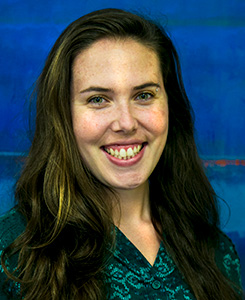
Break the Code: Canvas HTML Editor Tips for Coders & Non-Coders Alike
Allison Hughes
Cañada College
Take your Canvas pages and instructions to the next level with these simple techniques and tips for how to use the HTML Editor to enhance your work in Canvas’ Rich Content Editor.

From Blah to Bling: Building an Equity-Minded Syllabus
Fabiola Torres
Glendale Community College
Begin to build a syllabus from an equity minded approach. Using Canvas and Equity-Minded frameworks, experience a syllabus transformation demo from Blah to Bling.
● General Sessions ●
11:00 a.m. to
11:45 a.m.
Pacific Time
Register for ONE of these concurrent sessions.

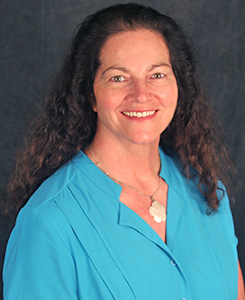

The New Canvas Gradebook, Presented by CCC Beta Testers
Liz du Plessis, Sylvia Amito'elau, Wendy Bass
Santa Rosa Junior College, Coastline College, Pierce College
Learn about the New Gradebook from three beta testers in the California Community College system. The session will include a demonstration of the New Gradebook & how to get started. Beta testing results of the CCMS Gradebook Work Group & lessons learned. An opportunity for participants who have used the New Gradebook to provide feedback. A Canvas representative will be available during the session to answer questions.
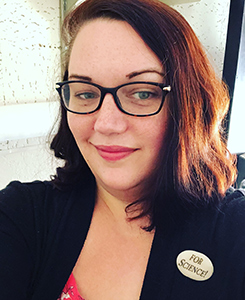
Incorporating Oral Presentations into a Fully Online Course
Mary Anne Sunseri
Foothill College
Presentation and public speaking skills are crucial to so many disciplines, yet few online students are given opportunity to speak. How might instructors foster presentation skills in their online classes? I’ll answer that question in this session, sharing my experience teaching fully online public speaking classes (with synchronous online speeches) and discussing how we can use the online learning environment more fully to our students’ benefit.
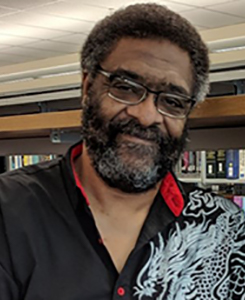
Promoting Equity with EdPuzzle and Canvas Mastery Paths
Marvin Patton
Merced College
Combining EdPuzzle with Mastery Paths creates a fun and easy process for low-scoring students to re-study content and increase their credit. This is a powerful and encouraging way to keep your students engaged and striving for success.
● Tools Showcase ●
12:00 p.m. to
12:45 p.m.
Pacific Time
Register for ONE of these concurrent sessions.

NameCoach for Equitable Classrooms
Praveen Shanbhag
NameCoach
NameCoach is a new tool provided by the OEI to California Community Colleges that nurtures inclusion in the classroom and other campus settings. It is now available to all OEI consortiums colleges at no cost and available to all CCCs at a discount. NameCoach provides students with a simple way to record a pronunciation of their name and convey their gender that is easily shared with their instructor and student peers. In this webinar, you will see NameCoach in action and hear how Foothill College has used it to foster belonging and address equity gaps..

Practice Makes Progress
Emily Foote
Instructure/Practice
Driven by the idea of providing equal educational opportunities for all learners, Emily founded Practice. Practice is a new tool with a Canvas integration that helps close the skills gap via deliberate practice - a systematic approach to build competence and confidence in a given skill. Practice leverages the power of peer and expert video-based feedback to create an environment of continuous learning for your students and faculty and does so in a scalable way. Current higher education clients include UCSF, Harvard, Penn, Drexel, ASU, and FIU. Join Emily as she walks you through the Practice platform and discusses in detail the different ways in which it has been used in higher education.

Quick! Add Video to Your Canvas Course
Mirla Garcia
Palomar College
Learn how to easily and quickly add video to your course from within Canvas using 3C Media Solutions (a project of CCC TechConnect, funded by the CCCCO). How to store, share, and embed your media within Canvas to provide easy access to your students or peers will be demonstrated along with other features/benefits, how campuses are using and reacting to the tools, and how the tools are contributing student success.
● Showcase Speakers ●
1:00 p.m. to
1:45 p.m.
Pacific Time
Register for ONE of these concurrent sessions.

Surprise! Good Things Happen When Students Get Creative
Laura Gibbs
University of Oklahoma
When you design your courses with open-ended assignments, students will surprise themselves, and you, with their creative, original work. In this presentation I will outline different options for including open-ended assignments in any kind of class, along with strategies for "feedforward" assessments that encourage risk-taking and revision.
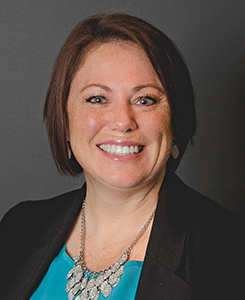
Change Is Hard, Or Is It?
Mindy Hintze
Instructure
Change doesn't have to be hard. By leveraging data supported processes and tools, leaders are able to not only drive change, but ease the transition to the new future state. Join me in this session to learn about ways to make change easier and stickier!
This Session Canceled
● General Sessions ●
2:00 p.m. to
2:45 p.m.
Pacific Time
Register for ONE of these concurrent sessions.
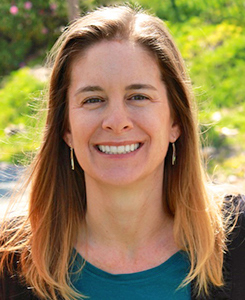
Canva for Canvas: Make Beautiful Banners for Your Canvas Course!
Tracy Schaelen
Southwestern College
Canva is a free graphic design site for those of us who aren’t graphic designers. We will showcase a few banners and graphics and then discuss which templates work well for different purposes in Canvas. You will learn how to find and edit designs, add your own images if you wish, and bring your completed creations into your Canvas course. Lastly, we will cover alternative text for accessibility and the secret to making banners responsive to different screens sizes. If you are looking for ways spice up your pages or would like to add a design theme to your course, this is the session for you!

Precious Panda Pointers
Sylvia Amito'elau
Coastline College
Participants will oooh and awe as many precious pointers will be demonstrated in a Canvas course. Discover tools and settings that have been in Canvas all along but perhaps you didn’t have the force to find them. These pointers will help you make your course more useable, accessible, agreeable, and adorable. This session is for all levels of Canvas users: from the Padawan Panda up to the Master Panda.


Best Practices for Building a Local POCR Team
Rebecca Pang, Suzanne Ama, Gary Enns, Peter Fulks, Karen Moore
Cerro Coso Community College
Cerro Coso Community College has always been committed to offering quality online courses. To reinvigorate this notion of quality online courses, the college has built a local peer online course review (POCR) process, modeled after the CVC-OEI POCR process. This process is not yet OEI approved, but we are pursuing approval. In this session, the Cerro Coso POCR Team Chair and the Distance Education Director will discuss the steps and processes they’ve taken to build a POCR Team. Additionally, participants will hear direct experiences of faculty members who have gone through the local review process.


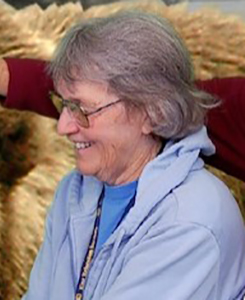
● General Sessions ●
3:00 p.m. to
3:45 p.m.
Pacific Time
Register for ONE of these concurrent sessions.

ACCJC Determination of Regular and Effective Contact
Lisa Beach
Santa Rosa Junior College
How do accreditation teams determine whether regular and substantive interaction is happening in online courses? Evidence suggests that different teams may have very different ideas about how to do this. Let's talk about how we might be able to add some structure and equality to that process, and how we can ensure that the ACCJC gets what they need while protecting the privacy rights of faculty and students.
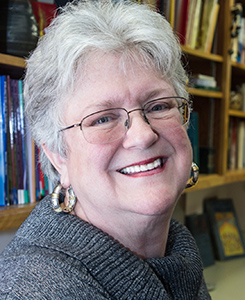
SLO-centric Course Planning and Grading in Canvas
Lisa Phares Marchand
Cosumnes River College
Learn to design SLO-centric courses and manage grading in Canvas. Unlike numeric grading schemes, assignments are grouped and weighted by SLO. Grading rubrics communicate student progress and collect outcomes data simultaneously.

Using ConferZoom Video Meetings to Support Pedagogy & Course Design
Nicholle Clark
College of the Desert
Nicholle will take you on a tour of her online course and demonstrate how she uses ConferZoom, an online meeting tool available for free to all CCC faculty and staff, to support student success. Nicholle will share student satisfaction feedback, concrete ideas about how you can integrate ConferZoom into your online course, and tips for using this tool to fulfill elements of the OEI Course Design Rubric.
● Canvas Presentation ●
4:00 p.m. to
4:45 p.m.
Pacific Time

Stump the Panda
Erin Keefe
Instructure
This is an open-ended session hosted by one of Instructure's Canvas experts, Erin Keefe. You'll be invited to ask your most pressing "How do I..." questions and learn a ton in a very short time.


